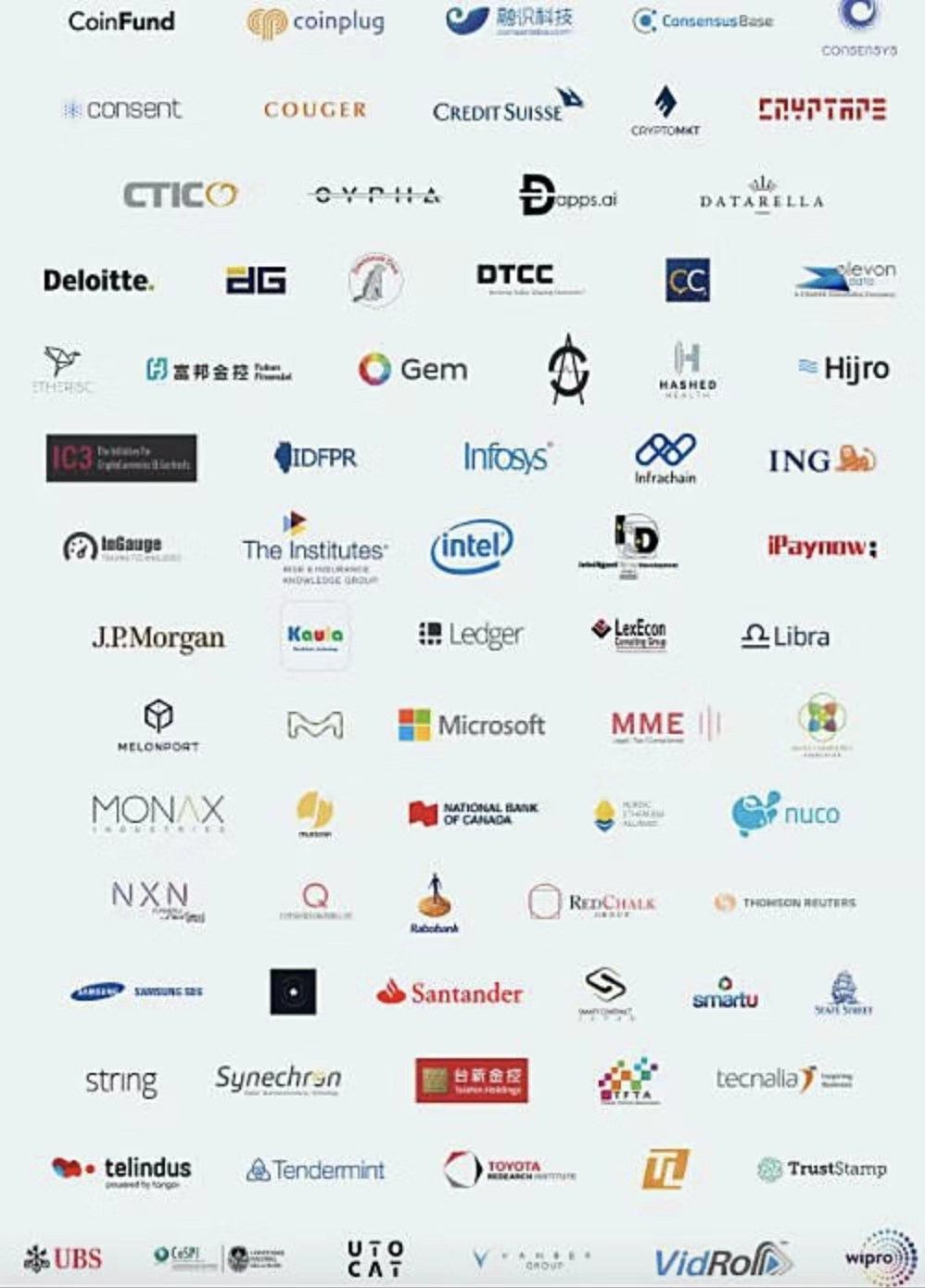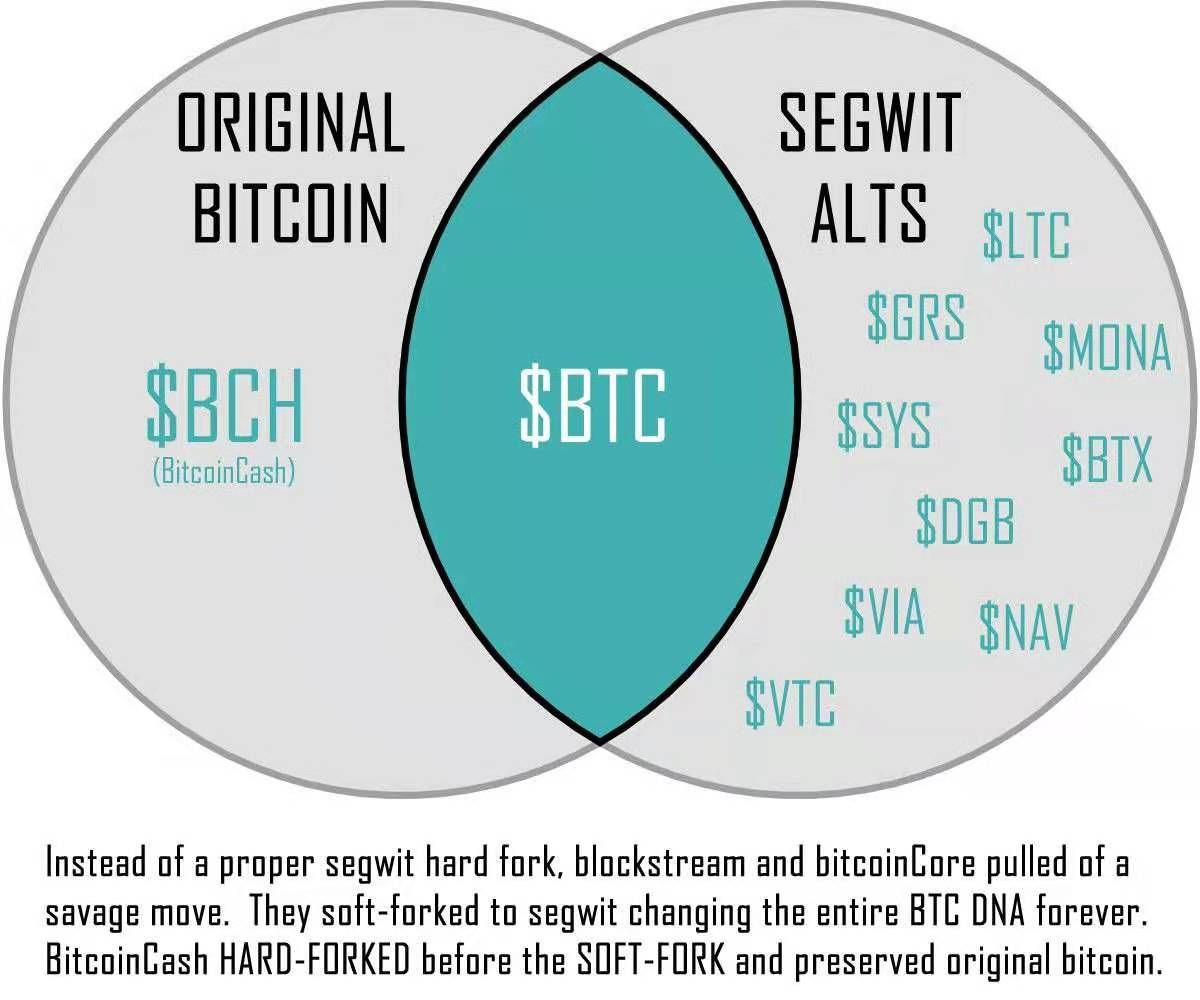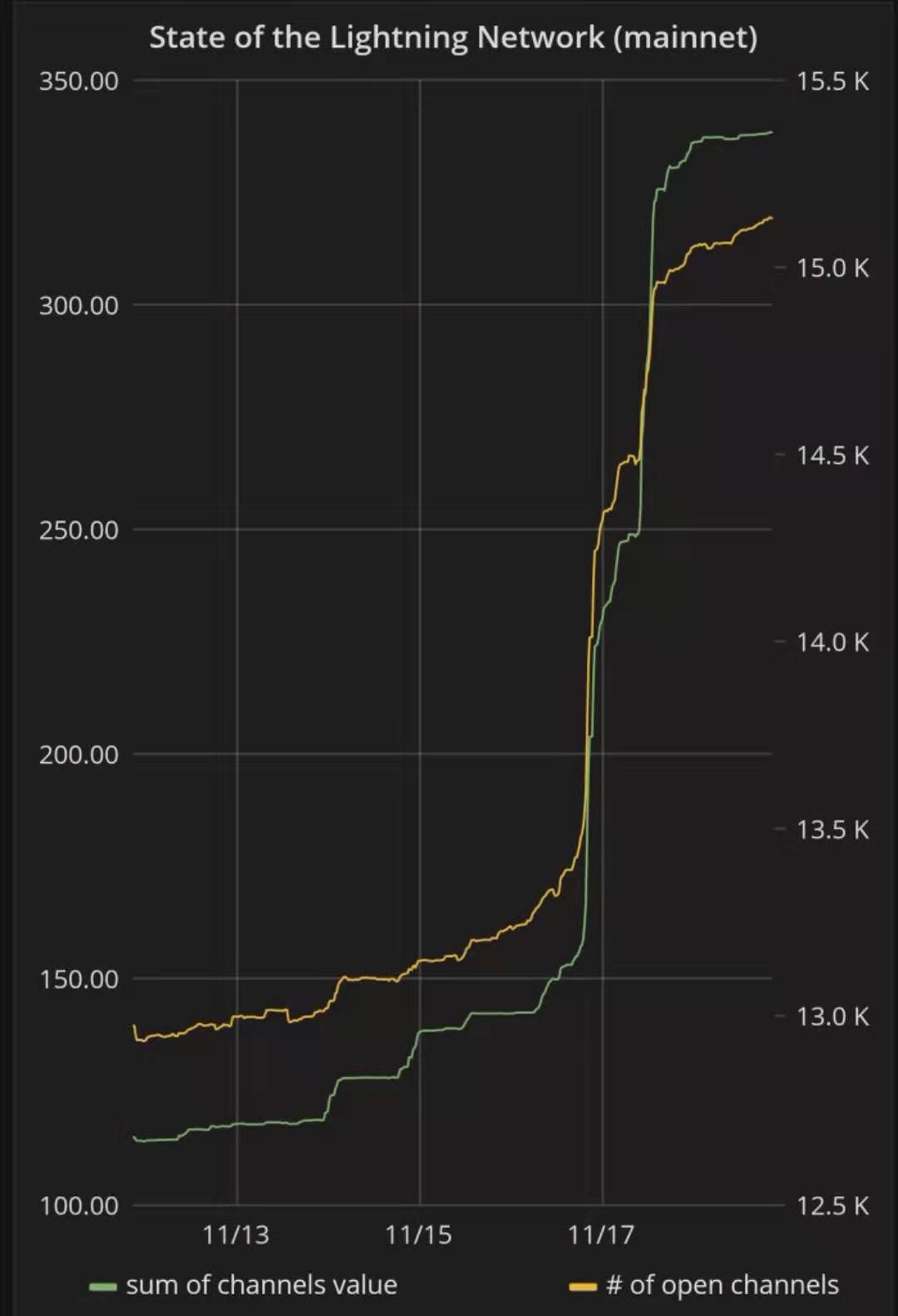Bitcoin and cryptocurrency in the history of ice and fire: the most unforgettable 2017 and 2018
2017 is the peak year of bitcoin and blockchain. The price of virtual currency soared, 1CO blowout, and many forked coins were born. Of course, there have been some significant advances. The total market value of cryptocurrencies soared from $18 billion to a peak of $644.0 billion, a 35-fold increase.
On January 7, 2018, it reached a peak of 835 billion US dollars. After only 10 days, the market value lost nearly 50%. On February 7, the market value shrank by 70% to a low of $276 billion, and the encryption asset bubble burst…
Let's take a look at how the history of the blockchain in the past two years has been staged.
01 2017
- Blockchain will solve digital identity security issues? 84% of organizations believe that blockchain is more secure than traditional IT systems
- After five years of grinding a sword, Weizhong Bank's financial technology is fully open source, and the blockchain plays an important role.
- zkSNARKs contract library "input pseudonym" vulnerability, many mixed currency projects
January
The adoption rate of bitcoin continues to rise globally, with hundreds of online traders accepting bitcoin as a payment method, and Japan is the forerunner of this trend.
Due to the widespread adoption of Bitcoin and the renewed pursuit of trading platforms, mining costs have reached new heights.
At the same time, Monero has also made a significant progress. Because it uses the algorithm of bitcoin core developer Gregory Maxwell for private transactions, combined with Ring Signatures improvements, making it possible to hide transaction amounts, which makes Monroe an anonymous asset. One of the best choices for transfer.
March
During the period from February to March, dozens of large companies, accounting firms, banks, research institutes and technology companies and some blockchain start-ups jointly established a non-profit organization : the Enterprise Ethereum Alliance (referred to as the Enterprise Ethereum Alliance). EEA), the Alliance has 30 founding members.
 As of May 2017, EEA has 116 corporate members
As of May 2017, EEA has 116 corporate members
April
Government agencies in some countries have issued a positive statement on their attitude towards cryptocurrencies.
Japan passed a law accepting bitcoin as a payment method, and Russia announced a bill to establish a legal system for transactions in Bitcoin, Dash, Ethereum and other digital currencies.
In late April, companies such as the Spanish Foreign Bank (BBVA), a large Spanish banking group, joined the Ripple network to address the speed, scalability and cost of global transactions. This triggered a wave of Ripple snapping up on major trading platforms. Ripple's price rose 10 times in less than a month and was once the second-largest cryptocurrency in the market.
May
Lightyear.io, the commercial arm of the Stellar Network, was launched in May, and the price of the stellar coin has doubled in less than a month.
When the people behind ransomware WannaCry replaced all their money with Monroe, Monroe gained continued appeal as the main untrackable privacy cryptocurrency. Monroe was also accepted by the Shadow Brokers (a hacker group), and the organization known as the "shadow broker" voluntarily disclosed the code for the blackmail virus WannaCry.
June
This is an interesting thing for 2017: In the Unicode 10.0 release, the bitcoin "B" symbol was also included and encoded in U+20BF (₿).
On June 25, 2017, EOS began a one-year crowdfunding (1CO).
July
In July 2017, the Bitcoin community's lasting debate on how to size the blockchain gave a dramatic result.
The rising cost of the Bitcoin network has driven some people in the community to create a hard fork to increase the size of the block. In fact, this debate began as early as 2015. Some members of the Bitcoin community led by Roger Ver believe that the original intention of Bitcoin was as a trading medium, but some people regard it as Value investment storage, which is the original intention of the bitcoin.

They claim that the best way to increase bitcoin scalability is to increase the block size, but this has been resisted by many people, while others in the community have proposed an isolation verification protocol.
Focusing on the proposed Bitcoin ABC fork, a large number of Chinese-based miners, investors, developers and activists have gathered to increase the block size limit to 8M, thereby improving the transactions that Bitcoin classified accounts can handle. the amount.
In the end, a group of bitcoin activists, investors, entrepreneurs, developers, and miners mainly in China were dissatisfied with Bitcoin’s SegWit improvement plan to expand bitcoin capacity, which in turn promoted another. Alternative plan: Bifurcation from Bitcoin creates Bitcoin Cash (BCH).
On July 25, 2017, the US Securities and Exchange Commission (SEC) issued a report on initial public offerings (1COs) and The DAO, which reported that DAO tokens sold on the Ethereum block were securities, so The DAO project It is very likely that the US securities law has been violated.
August
On August 1, 2017, Bitcoin cash began to be traded at a price of approximately $240 each, while the price of Bitcoin was approximately $2,700.
September
In September 2017, as part of the Star Cooperation Fund project, the Star Fund allocated $2 million worth of sterling coins for seed round investment.
Before the end of the third quarter, Stellar's 1CO sales had reached $2.3 billion, more than 10 times the total 1COs in 2016. Take the news application developer Kik 's 1CO as an example, it raised nearly $100 million, but this has also begun to raise awareness of the "virtual currency bubble" risk.
On September 4, 2017, the People's Bank of China and the seven ministries and commissions jointly issued a notice on the prevention of the financing risk of token issuance. The announcement basically banned the issuance of token financing (1CO), and the relevant institutions also had The corresponding management restrictions, including the trading platform, also reminded the public about the risk of such investment behavior. This day, it was called "coin circle 94" by domestic investors.
October
In October 2017, Stellar also partnered with IBM and KlickEx to facilitate cross-border transactions with banks in the South Pacific.
On October 16th, the Ethereum community implemented Byzantium, commonly known as “Ethereum 3.0”. It greatly reduces the complexity of the Ethernet Virtual Machine (EVM), makes smart contract development easier, and adds support for ZCash zk-snark.
November
In November, the 1CO market experienced explosive growth, with more than 50 companies listed every month, most of which met their financing targets.
At the end of 2017, malicious players used the mining server Coinhive to infect computers and websites, and use the user's computer to calculate the money for them. Once you've loaded Coinhive, you don't have to add all sorts of annoying ads anymore. Coinhive can provide a way for websites to send ads to visitors and earn revenue. When the visitor is browsing the content of the web page, Coinhive will use the user's CPU to mine the Monroe currency, and the owner of the website or application will receive a certain percentage of the mining reward.
Some websites and applications run Coinhive without notifying the user or asking for the user's consent, and soon hackers are starting to use Coinhive. Coinhive scripts are quickly banned by multiple service providers, anti-virus and anti-virus software companies.
December
As of the end of 2017, the financing of 1COs was almost 40 times that of 2016, but still less than 2% of IPO financing.
 2017 Bitcoin price changes
2017 Bitcoin price changes
On December 6th, the software market Steam announced that it would no longer accept Bitcoin as a payment method for its products, on the grounds that bitcoin transactions are slow, price fluctuations, and transaction costs are high.
The surge in bitcoin prices has led to more trading platforms becoming targets for hackers, as hacking has become more profitable. NiceHash, a platform that allows users to sell hash computing, has 4,700 bitcoins (about 80 million US dollars) stolen. On December 19, 2017, companies with South Korea's Youbit virtual currency trading platform applied after hacking. Bankruptcy.
02 2018
In 2018, the price of the cryptocurrency market soared to an unprecedented height, followed by an endless fall.
At the highest point in Bitcoin's December 2017, CMOE launched bitcoin futures trading, and after several hacking attacks on several trading platforms, tens of billions of dollars of funds flowed into almost all altcoins in the virtual currency market. . In digital currencies like Ripple and Ethereum, each token receives a dazzling return, raising concerns and concerns about the market's over-excitement and the likelihood of bubbles.
Driven by EOS, the virtual currency market showed an upward trend in April, and then began a slow and steady decline. It oscillated below the $250 billion mark. As the year approached, the virtual currency fell more fiercely, eventually bottoming out to $100 billion on December 15, and the market value shrank by 83%.
1.1CO
Even if the price of virtual currency falls and the market sentiment turns from bullish to bearish, it has not had much impact on 1CO.
The average size of 1CO continued to grow from $16 million at the end of 2017 to $39 million in the second quarter of 2018. It is worth noting that these are driven by the giant 1CO such as Telegram ($1.7 billion) and EOS ($4.2 billion).
 2018 TOP 1COs Financing Ranking
2018 TOP 1COs Financing Ranking
A good thing for 2018 is that the new legal structure allows qualified investors to mix stocks and tokens, making 1CO a legitimate market. The conventional approach is to combine the traditional legal infrastructure of registered securities with some of the features of the encrypted 1CO by using the future token simple protocol (saft).
This approach has increased compliance with the “know your customer” (KYC) and anti-money laundering (AML) methods, which have in some cases become ambiguous in some cases.
Bitcoin
Bitcoin is the leader in the crypto-asset bubble and was accepted by the mainstream when it hit an all-time high (ATH) in 2017. By the end of 2018, the Bitcoin price index fell to the bottom of $3,200.
Bitcoin prices are greatly affected by the constant hacking of many trading platforms. Here are just a few major thefts: Coincheck (January 2018), Bithum, Coinrail (June 2018), and Bancor (July 2018), which increased the value of stolen assets by about $760 million. Although a large part of these thefts are against the altcoin, the price of Bitcoin is still affected, as many retail investors are beginning to fear the use of trading platforms, and hackers are proposing liquid assets from the market, making them “not easy to come by.” Encrypted assets are cashed out.
South Korean officials raided several Korean cryptocurrency trading platforms due to hacker theft. This is a great thing for the encryption market because South Korea was one of the most active countries in cryptocurrency trading and adoption.
Most importantly, in February 18, China completely banned the use of renminbi to participate in cryptocurrency transactions, reducing the proportion of renminbi in bitcoin transactions from about 90% to 1%.
To make matters worse, Facebook announced in February that it would ban all ads related to cryptocurrencies to reduce the spread of fraud. This ultimately affected hundreds of legitimate blockchain businesses. In the next few months, other digital giants have followed suit, such as Google, Bing, LinkedIn and the four major US banks, JP Morgan Chase, Citigroup, Bank of America and First Capital, have stopped allowing their customers to purchase cryptocurrency.
All of these negatives have had a negative impact on the price of virtual currency throughout the year, but this has not stopped the technological development in the blockchain field.
There will be a glimmer of light at the end of the long tunnel…
3. Lightning Network
In January 2018, Blockstream launched the Lightning Network, inspired by the 2016 white papers by Joseph Poon and Thaddeus Dryja. In short, the Lightning Network is a chain-based transaction by creating a payment channel between people. This greatly affects the speed and scalability of the network, as not all transactions need to be verified and stored on every node in the Bitcoin network.
According to Blockstream, the Lightning Network began testing on 60 nodes on January 18th, and its official beta was released on March 15. Jed McCaleb, founder of Stellar Lumens, announced that the agreement that Stellar Network will adopt is also inspired by the Lightning Network.
But this is not a simple upgrade. As early as February, bitcoin developers such as Peter Todd have pointed out that lightning networks are vulnerable to distributed denial of service (DDoS) attacks. Just a few weeks later, the lightning network encountered a DDoS attack on March 20, causing nearly 200 nodes to shut down, from approximately 1,050 to 870.
 Explosive growth in payment channels on Lightning Networks
Explosive growth in payment channels on Lightning Networks
After this vulnerability was fixed, the capacity of the Lightning Network grew steadily in 2018, and the payment channel ushered in a big bang in November, which produced an amazing growth.
4. The trading platform has become regular
As a result of ongoing hacking and more and more governments are considering the regulation of cryptocurrency-related activities, becoming a compliant cryptocurrency trading platform has become a competition. Two of the participants in this competition were: Coinbase and Coin.
Coinbase
Coinbase was founded a few years ago and received strong support from Silicon Valley, but it was not directly involved in the development of blockchain projects until 2018. In addition, it has taken important steps to ensure the legitimacy of its operations, such as providing detailed customer information at the request of the IRS. These data include the taxpayer ID, name, date of birth, address and historical transaction records from 2013 to 2015.
Binance
Coin Safety was founded in July 2017 by Zhao Changpeng (aka “CZ”). It was originally established in China and moved to Japan after the supervision of 94 in 2017. After Japan announced stricter encryption regulations, Coin Security moved its headquarters to Malta, which is crypto-friendly, and even the Prime Minister of Malta welcomes them!
5.Tether scandal
At the beginning of 2018, Tether accounted for about 10% of Bitcoin transactions, but by the summer of 2018 it had accounted for 80% of Bitcoin transactions.

In August 2018, Tether created a new release record, they issued more than 515 million USDT, and all were transferred to Bitfinex, from where it spread to other mainstream trading platforms.
On October 15th, the price of Tether, which should have been linked to the US dollar 1:1, was de-anchored and fell to $0.88. As Bitfinex traders converted USDT into bitcoin, the price of Bitcoin was pushed up, which triggered Credit Risk.
Tether's distribution company, Tether Limited, has consistently claimed that each USDT token in their currency reserve has a $1 reserve as an endorsement, but this has never been proven. This caused doubts in the cryptocurrency world.
For many people, Tether is a time bomb that will explode one day and will affect the entire cryptocurrency market.
03 Summary
The surge in the blockchain industry from 17 to 18 years has spurred the hearts of every investor in the industry.
The 17-year blockchain industry and the enthusiasm of Bitcoin are inextricably linked to the emergence of 1CO. The fall in the price of virtual currency in 2018 is also related to many projects that have collected millions of funds in the 1CO boom in 2017, and it is not unrelated to start selling their Ethereum and Bitcoin. In addition, many bitcoins stolen from previous years are said to have been cashed out in 2018, including suspicious wallets in the 2014 Mt. Gox scandal.
17 to 18 years is the most insane period of the industry and the coldest period of time. Although this series has come to an end, the wheels of history are still rolling forward.
No. 289: A lot of things happened in 17 to 18 years. It is also the fastest growing period in this industry. After reading this article, what are your impressive events and what experiences can you share with you ? Feel free to share your opinion in the message area.
——End——
Author: Ting Feng
Source: vernacular blockchain
『Declaration : This article is compiled from “Medium” and does not represent the vernacular blockchain position, nor does it constitute any investment advice or suggestion. You are not allowed to reprint any third party without the permission of the “Baihua Blockchain” source. 』
We will continue to update Blocking; if you have any questions or suggestions, please contact us!
Was this article helpful?
93 out of 132 found this helpful
Related articles
- The currency circle succeeds in marketing? Gold Daxie: Bitcoin is just that.
- From Libra concept to USDT or thunderstorm: all stable coins are essentially simulations of French currency
- Bitcoin tax is coming: 10,000 tax warning letters are on the way
- Viewpoint | By the end of 2020, encrypted derivatives or 20 times the size of the spot market
- Exploring Ethereum in depth: What are the pros and cons of using Ethereum blockchain?
- Ethereum: Please don't call me a cottage coin!
- Buying BTC on Monday actually earns nearly 20 times more than buying on Sunday?






